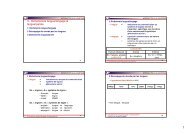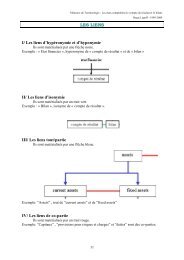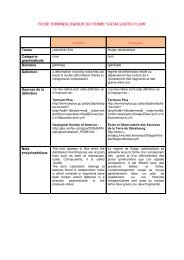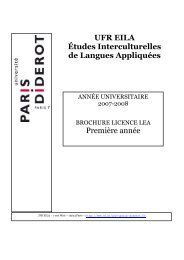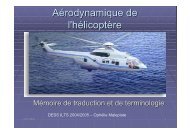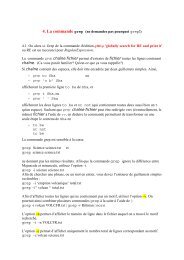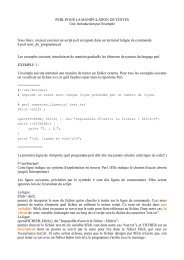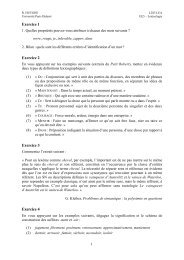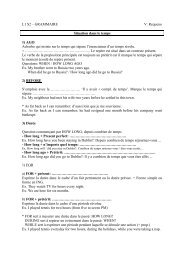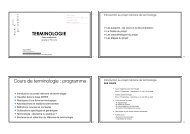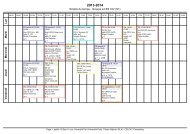INTRODUCTION TO ENGLISH TEXT LINGUISTICS
INTRODUCTION TO ENGLISH TEXT LINGUISTICS
INTRODUCTION TO ENGLISH TEXT LINGUISTICS
You also want an ePaper? Increase the reach of your titles
YUMPU automatically turns print PDFs into web optimized ePapers that Google loves.
Professor Christopher Gledhill<br />
(Notes de cours, Linguistique du texte anglais, 48LGAN23, EILA, Université Paris Diderot)<br />
Genre<br />
Register analysis<br />
Extract 1 Article on science Field: The text deals with a new discovery, using terms relating to<br />
science and research such as scientists, synthetic life forms,<br />
experiment and neologisms such as designer organism. The<br />
specific field is likely to be biology. Note also the implicit semantic<br />
field of ‘novelty’ (new, landmark, pave the way, world’s first.)<br />
Extract 2<br />
Instruction<br />
manual<br />
Mode: This text is likely to be the first sentence in a breakthrough<br />
story in a current affairs magazine or newspaper. The press often<br />
uses capitals for the first letter or the first word in their articles, as<br />
can be seen here in: SCIENTISTS. Notice that the text uses typically<br />
journalistic terms to refer to a scientific breakthrough, such as<br />
landmark experiment, pave the way. These expressions would<br />
probably not be used in a more technical context.<br />
Tenor: The text is written for general readers, not specialists. It is<br />
likely that the author is a journalist. There is a degree of<br />
evaluation, even ‘hyperbole’, in the use of certain expressions<br />
(new, landmark, pave the way, world’s first).<br />
Field: On an explicit level, this text names and describes a<br />
technical product (explicit use of proprietary terminology and<br />
abbreviations, IW6 loudspeaker. Also note the use of heavily premodified<br />
noun groups: wall/ceiling mounting, which are typical of<br />
many technical texts. It is likely that the subsequent text will deal<br />
with issues about safety and other technical aspects of the<br />
product. Implicitly, the purpose of this particular part of the text is<br />
to establish that the product has come into the owner’s<br />
possession though a wise act of ‘consumer choice’ (and this is in<br />
fact referred to by two lexical items: confidence and choice.)<br />
Mode: This extract is a typical introduction from a technical<br />
manual. It is likely to be the first ‘move’ (‘congratulate the reader’)<br />
in a text which is likely to turn to other, more technical, topics<br />
(how to use the product, how to carte for it, how to obtain service<br />
etc.)<br />
Tenor: The text addresses the reader directly, and narrows down<br />
the readership of the text to one person: the owner of a new<br />
product. But the text also takes the point of view of the producers<br />
or manufacturers, and attempts to establish a rapport with the<br />
consumer. The use of exclamation marks and contractions<br />
(you’ve) introduce a note of informality. The text also uses<br />
flattering language to the owner (initial emphasis on<br />
congratulations, confidence and choice).<br />
7 / 37




